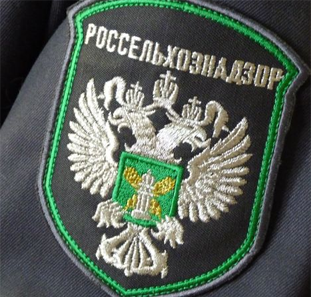Struggle for product quality and safety: experience of Belarusian colleagues

| Detection limits (Rapid tests 4 in 1), µg/kg | TR TR standards TC 33, MPC according to the decision № 28, µg/kg | |
| β-Lactams | ||
| Penicillin G | 1-2 | 4 |
| Cloxacillin | 3-6 | 30 |
| Amoxicillin | 2-3 | 4 |
| Oxacillin | 5-7 | 30 |
| Nafcillin | 7-10 | 30 |
| Empicillin | 2-3 | 4 |
| Dickloxacillin | 3-6 | 30 |
| Gasicillin | 3-5 | is not regulated |
| Getacillin | 8-10 | is not regulated |
| Piperacillin | 10-12 | is not regulated |
| Penicillin procaine | 8-10 | is not regulated |
| Ticarcillin | 8-10 | is not regulated |
| Cephalosporins |
| |
| Zefkin... | 5-7 | 20 |
| Cephalonium | 3-5 | 20 |
| Ceftiofur | 70-90 | 100 |
| Cefapirin | 4-8 | 10 |
| Cefoperazon | 3-5 | 50 |
| Cefacetrile | 15-20 | 125 |
| Cefazolin | 20-30 | is not regulated |
| Cefadroxil | 16-18 | is not regulated |
| Cefoxazole | 85-90 | is not regulated |
| Cefotaxime | 35-40 | is not regulated |
| Cefuroxime | 30-35 | is not regulated |
| Tetracycline | 7-10 | 10 |
| Chlorotetracycline | 7-10 | 10 |
| Doxycycline | 7-10 | 10 |
| Oxitetracycline | 7-10 | 10 |
| Streptomycin | 50 | 200 |
| Dihydrostreptomycin | 50 | 200 |
| Chloramphenicol. | 0.3 | 0.3 |
The opinion of the editorial board may not coincide with the opinion of the author
Read together with it:
- The IEA sees a risk of a decline in oil production in Russia due to sanctions.The IEA sees a risk of reduced oil production in RUSSIA due to US sanctions , but maintains its production forecast. According to the IEA, Russian oil exports will remain unchanged.There is a "significant downside risk" to Russia's oil production forecast due to US sanctions, the International Energy Agency (IEA) said in a report.BLOOMBERG . The agency's experts believe that the latest US sanction...
- "Коллективы АПК способны решать любые задачи даже в непростых условиях". Назаров о заслугах сельхозпроизводителейЮрий Назаров 13 ноября, Минск. Обеспечение продовольственной безопасности страны - большое достижение трудовых коллективов аграриев, отметил управляющий делами Президента Республики Беларусь Юрий Назаров на торжественной церемонии награждения государственными и иными наградами работников АПК Управления делами Президента Республики Беларусь, передает корреспондент БЕЛТА. Торжественная церемония наг...
- "Белорусские продукты - страновой бренд". В Гродно поздравили работников сельского хозяйства областиФото 13 ноября, Гродно. В Гродно торжественно поздравили с профессиональным праздником работников сельского хозяйства, передает корреспондент БЕЛТА.Этот праздник в нынешнем году для аграрной отрасли региона особенный - впервые в истории в области собрали более 2 млн т зерна с учетом кукурузы. Как отметил в беседе с журналистами председатель комитета по сельскому хозяйству и продовольствию облиспол...
- He crawled to the icon with prayer. The true story of a man who overcame drug addiction.Alexander Ovchinnikov. Topic News. Our project's hero was a drug addict for many years. The thought that this was a dead end never left him, but his addiction proved stronger. One day, when he could no longer walk, he crawled to an icon in prayer. This became his first step toward a new life. Today, he heads a charity center that helps those who have given up hope and are unable to quit ALCOHOL an...
- Sustainable growth of the food and processing industries in BashkortostanIlshat Fazrakhmanov, Deputy Prime Minister andThe regional Minister of Agriculture noted that the development of these industries provides the population with essential food products and contributes to increased exports. Since 2020, agricultural exports from the region have doubled. Since the beginning of 2......
- Колумбия: При экспорте скота сертификация и прослеживаемость больше не являются необязательнымиВысококачественное животноводство, особенно при экспорте, требует сертификации и прослеживаемости. Это необходимые условия для выхода и конкуренции на многих международных рынках, а также на некоторых всё более требовательных внутренних рынках. Колумбийское животноводство не является исключением из этих правил, и, хотя предстоит ещё многое сделать, всё большее число ферм и компаний внедряют эти ме...
- Rosselkhoznadzor has banned meat imports from two Belarusian enterprises due to violations.In addition, three other Belarusian producers are now subject to strict laboratory monitoring due to initial deviations: azithromycin was found in poultry MEAT from Druzhba Poultry Farm, and the pesticide imidacloprid was found in honey from Pchalyar Polachchyny Farm. Powdered MILK from Luninetsky Dairy Plant was also found to containcoli bacteria . These measures were taken at the request of the ...


